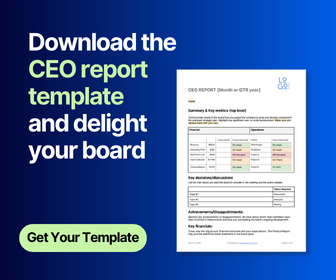BoardPro’s top tips for dealing with difficult board members
While it may be difficult to both identify and admit, sometimes board members can be a hit or miss. Good ones that are easy to work with make board life straightforward and help operations run much smoother. But difficult board members, even destructive ones, can bring immense turmoil to the work environment, or worse, threaten a company’s survival.
Our team at BoardPro has worked with all sorts of boards – some awesome ones and some not so great ones as well. If you find yourself working with the latter, you should first decide if the board’s behaviour or situation calls for confrontation. And, if you do choose to speak to the person or board, here are five tips and pieces of advice that can help you deal with difficult board members.
The good news is if you do manage to master these tips, they can easily apply to other instances that require you to confront staff members, volunteers, clients or even, your significant other.
Confront the issue directly and in person
There are several situations that warrant confrontation in the workplace. This could be when your board member does not perform their responsibilities, carries a bad attitude or has done something to drain the energy and life out of board meetings or your organisation. Whatever the case, you should not wait to discuss the issue with your board member.
As soon as you notice or become aware of the problem, contact the person and have an open and honest discussion about the issue. We have more tips below on how to have this difficult conversation, but the key thing to remember is to have this discussion in person. Why? Well the last thing you want is to send an email with a list of misdemeanours and start an email war, or for the board member to interpret the tone of the message incorrectly.
Think from the board member’s perspective: If you were in their shoes, wouldn’t you prefer the courtesy of an in-person conversation as well? This way, there is a much better chance of having an open and honest discussion.
Focus on the organisation not the person
When confronting your board member, it is best to approach it from an angle that will benefit the organisation or the board, rather than attacking the person or their qualities.
Before speaking to this person, ask yourself this: what will allow me to best meet my organisation’s mission and goals, and how can I ask my board member to do the same? Even if you have become friends with your difficult board member, confronting their poor behaviour becomes a business interaction rather than a personal one, so it is important to shift the focus to the business rather than on the individual itself. Remember, you are asking the board member to change their behaviour not because they are a bad person in general, but because by improving their behaviour, they can better serve and help the organisation, your customers and clients.
Include specific examples
Rather than using vague generalisations or assumptions, such as “you clearly don’t care about the organisation anymore,” you need to be specific when confronting your board member.
There are two main problems with generalisations or assumptions. Firstly, if the board member can demonstrate through one act that they do “care” about the organisation, then they disprove your argument. Secondly, their focus will shift to how they can change their behaviour to show you that they “still care,” rather than improving their behaviour for the benefit of the organisation.
So instead, you should describe previous examples of when they did not demonstrate ideal behaviour. This can include phrases like:
- “Last week, when you cancelled our meeting at the last minute, I felt like you no longer cared or prioritised this organisation.”
- “Though you previously promised to recruit five sponsors for our fundraiser, I can only see in my notes that you still have not talked to anyone. What’s going on?”
Keep in mind to use a tone that encourages openness and honesty, rather than using an accusatory tone. Combined with the specific examples in your statements, you should be able to start a fruitful discussion with your board member rather than evoke a defensive response.
Use "I" statements
“I” statements help diffuse an accusatory tone from your end and prevent a defensive response from the board member. The two examples listed above utilise “I” statements, wherein you describe the behaviour in terms of your perception of the issues, rather than describing the behaviour as the “truth.” Compared to using “you” statements, e.g., “last week, when you cancelled our meeting at the last minute, you don’t care about the organisation anymore,” “I” statements decrease defensiveness in the receiver and minimise feelings of being attacked.
Listen respectfully
Once you get your point across, stop talking and listen. Give your board member a chance to process your information and then share their perspective. There is always a chance that what you perceive as a problem is just a misunderstanding. Maybe your board member does not recall promising to secure five sponsors and offering them a chance to clarify this can solve the problem.
Even if the issue is not a misunderstanding, allowing your board member an opportunity to speak their mind will let them feel respected. This will lead to a more fruitful conversation, allowing both sides to completely explore the issue and arrive at a resolution that fits both of your interests and needs. Most importantly, a respectful and effective conversation will help progress your mission.
Confronting your board member on misdemeanours is a difficult conversation. It requires respect, openness, honesty and skill. Because these conversations are not easy, we tend to shy away from them. But by doing so, you can harm your organisation and even relationship by letting the problem go on. To avoid productivity from suffering and resentment from building, follow these top five tips to make such difficult conversations a little easier and more productive.
Share this
You May Also Like
These Related Stories
.png)
BoardPro’s eSignatures simplify your document workflow

The power of simplicity with BoardPro board management software


